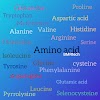Definition of Vitamin D | Types of Vitamin D | Function of Vitamin D
Vitamin D is a fat-soluble vitamin that is naturally present in a few foods, added to others, and available as a dietary supplement.
Or
Vitamin D is a group of fat-soluble secosteroids responsible for increasing intestinal absorption of calcium, magnesium, and phosphate, and many other biological effects. In humans, the most important compounds in this group are vitamin D3 (also known as cholecalciferol) and vitamin D2 (ergocalciferol).
The major natural source of the vitamin is synthesis of cholecalciferol in the lower layers of skin epidermis through a chemical reaction that is dependent on sun exposure (specifically UVB radiation). Cholecalciferol and ergocalciferol can be ingested from the diet and from supplements. Only a few foods, such as the flesh of fatty fish, naturally contain significant amounts of vitamin D.
History :-
In 1922, Elmer McCollum tested modified cod liver oil in which the vitamin A had been destroyed. The modified oil cured the sick dogs, so McCollum concluded the factor in cod liver oil which cured rickets was distinct from vitamin A. He called it vitamin D because it was the fourth vitamin to be named. It was not initially realized that, unlike other vitamins, vitamin D can be synthesised by humans through exposure to UV light.
Types :-
Vitamin D1 - Mixture of molecular compounds of ergocalciferol with lumisterol, 1:1
Vitamin D2- ergocalciferol (made from ergosterol)
Vitamin D3 - cholecalciferol (made from 7-dehydrocholesterol in the skin).
Vitamin D4 - 22-dihydroergocalciferol
Vitamin D5 - sitocalciferol (made from 7-dehydrositosterol)
Symptoms and Health Risks of Vitamin D Deficiency
Symptoms of bone pain and muscle weakness can mean you have a vitamin D deficiency. However, for many people, the symptoms are subtle. Yet, even without symptoms, too little vitamin D can pose health risks. Low blood levels of the vitamin have been associated with the following:
Increased risk of death from cardiovascular disease
Cognitive impairment in older adults
Severe asthma in children
Cancer






0 Comments